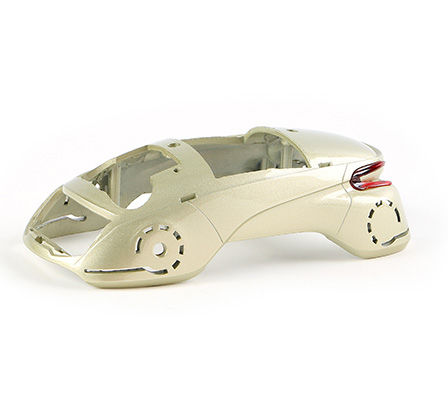Aluminum alloy die casting is a widely used process in various industries due to its high-performance, precision, and toughness. In this guide, we will explore the history, characteristics, and surface treatment methods of aluminum alloy die casting.
Die casting has a controversial history, with lead die casting being the earliest form. The first manually operated hot-chamber die casting machine was designed by J.J. Sturgiss in 1842. It wasn't until the early 20th century that die casting became widely used in industrial production. H.H. Doehler successfully developed die casting machines for industrial production in 1905, and later, Wagner designed a goose-neck pneumatic die casting machine, which was used to produce aluminum alloy die castings.
Die casting offers a wide range of applications, including high dimensional accuracy, low surface roughness, high productivity, high metal utilization rate, and high strength and surface hardness of castings.

Surface treatment is an essential aspect of aluminum alloy die casting, and various methods are used. This section explores some common treatments such as aluminum material phosphating, alkaline electrolytic polishing, environmentally friendly chemical polishing, and electrochemical surface strengthening.
Aluminum material phosphating is a treatment process that enhances the adhesion of coating materials. Detailed research has been conducted on the influence of promoters, fluorides, Mn2+, Ni2+, Zn2+, PO4, and Fe2+ on aluminum material phosphating. The study shows that guanidine nitrate is an effective promoter for aluminum material phosphating due to its good water solubility, low dosage, and fast film formation.
Alkaline electrolytic polishing produces a smooth, glossy surface by removing the roughness of the aluminum casting surface. Research has been conducted on alkaline polishing solutions by comparing the effects of corrosion inhibitors, viscosity agents, and other factors on polishing efficiency. A suitable additive was successfully added to the NaOH solution to produce an excellent polishing effect.

Environmentally friendly chemical polishing is a new technology that uses phosphate-sulfate-based solutions to replace nitric acid in the three-acid chemical polishing process of aluminum. The key to this technology is to add special compounds to the base solution to replace nitric acid, which can achieve zero NOx emissions and overcome the quality defects of similar technologies in the past.
Electrochemical surface strengthening is a process in which aluminum and its alloys are anodized in a neutral system to deposit a ceramic-like amorphous composite conversion film. The process, performance, morphology, composition, and structure of the film were studied to explore the film-forming process and mechanism.
Aluminum alloy die casting offers high-performance, precision, and toughness, making it a widely used process in various industries. Surface treatment methods such as aluminum material phosphating, alkaline electrolytic polishing, environmentally friendly chemical polishing, and electrochemical surface strengthening enhance the adhesion of coating materials, produce a smooth, glossy surface, and strengthen the surface of aluminum alloy die castings.
To learn more about aluminum alloy die casting and its surface treatment methods, contact us today. Our team of experts can provide you with comprehensive solutions for your manufacturing needs. Don't hesitate to reach out and experience the benefits of high-performance, precision, and toughness offered by aluminum alloy die casting.